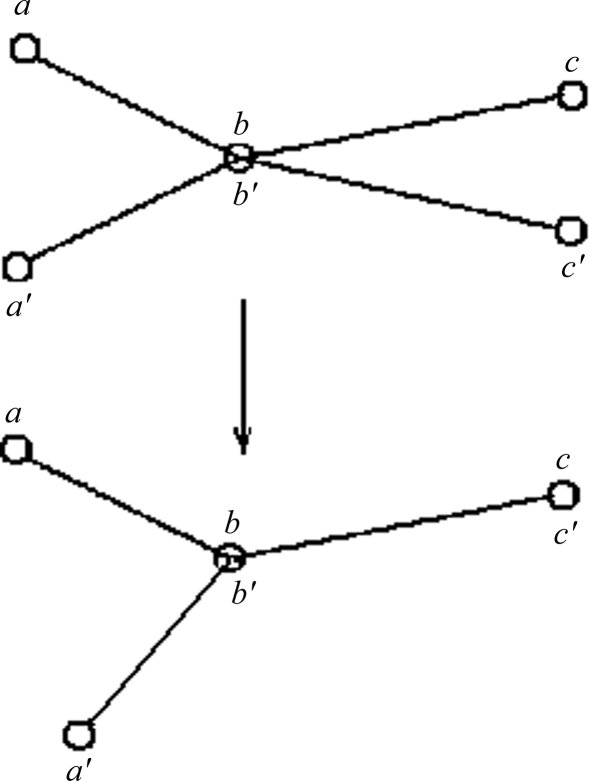Figure 1.
An illustration of simple rigid-body movement transformations. There are two sets of three points: a, b, c and a′, b′, c′. Within each set the three points are rigidly fixed relative to each other in a rigid body. The triangles formed by the two sets are similar but not identical. Points b and b′ are superimposed. Points b (b′), c and c′ are in the plane of the figure. The bottom configuration of the points is obtained by rotating the rigid set a′, b′, c′ in the top configuration by the angle cbc′ around an axis v 1 passing through superimposed atoms b, b′ and perpendicular to the plane of the page. This superimposes points c and c′ in the bottom configuration (see text for further details).

